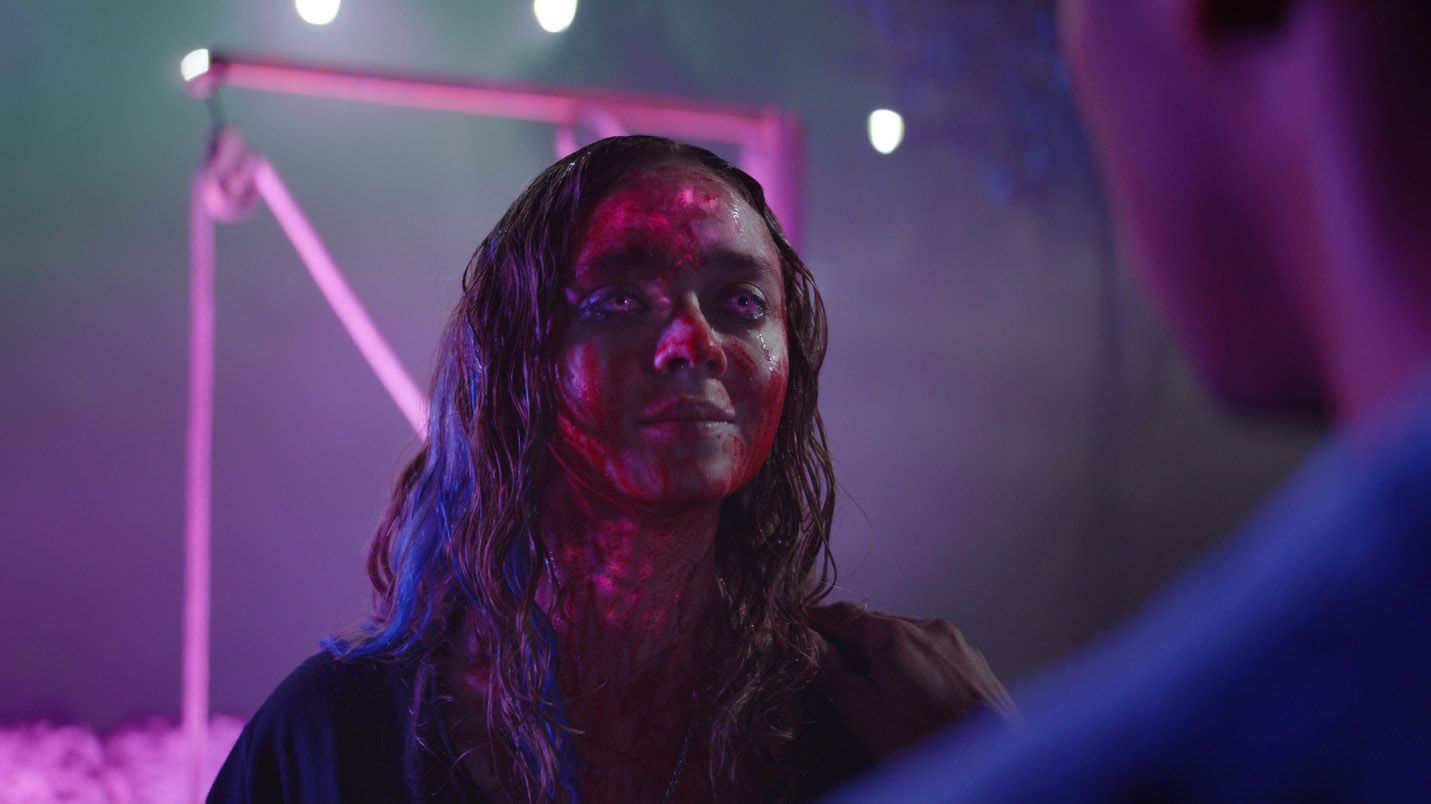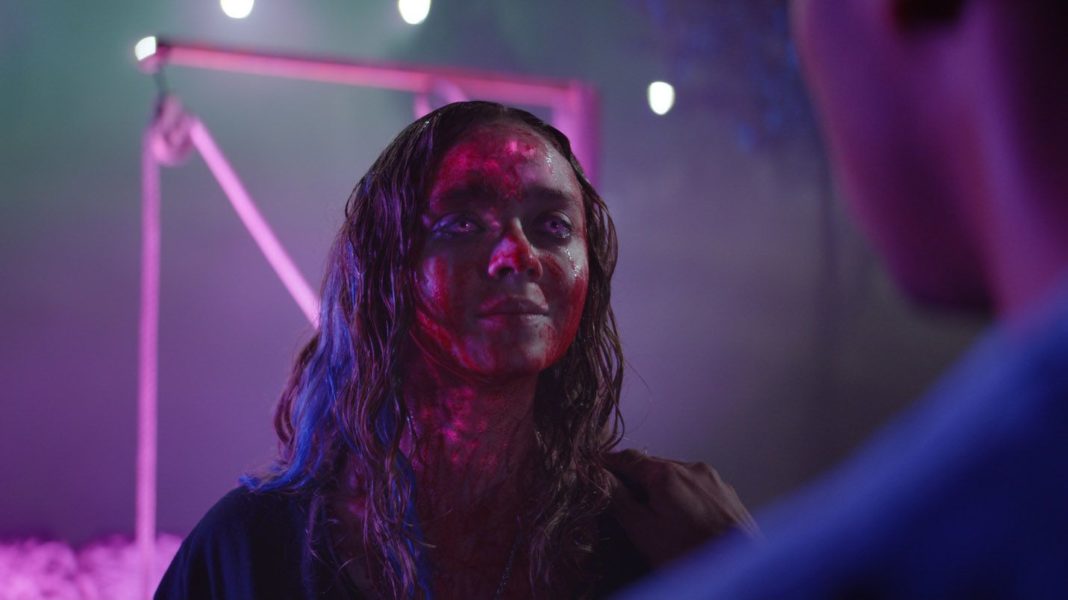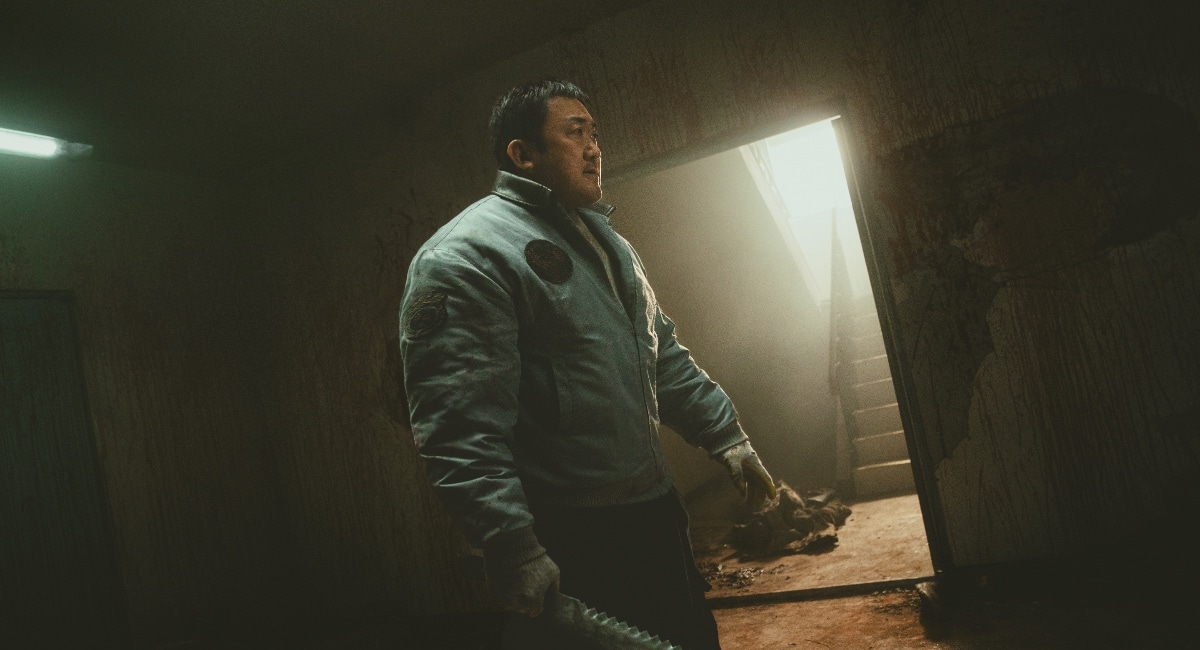
It feels like you can count the number of truly good Lovecraft film adaptations on one hand, and a couple of those fingers would be occupied by the work of unjustly forgotten horror master Stuart Gordon. And while horror aficionados would likely turn to Re-Animator as his key adapted touchstone in this arena, I tend to think more fondly of the cult classic From Beyond, the 1986 piece of body horror bathed in ethereal pinks and purples. I don’t know if director Richard Stanley was particularly taken in any way with Gordon’s effort when he embarked on an adaptation of the Lovecraft short “The Colour Out Of Space”, but it’s hard to escape the sense of shared DNA. It’s also equally a blast.
Stanley himself is a bit of a fascinating story. The filmmaker, whose 1990 cult classic Hardware is hardwired into the brains of the comic book reading youth of that era, just about dropped off the map after being let go from the eventual flop The Island of Dr. Moreau. His climb back into the saddle for this effort, a clear passion project, is the stuff of great drama all on its own. But to see him return in great command of the form serves to remind viewers that we’ve lost out on decades of potentially great horror/sci-fi filmmaker from a unique voice in the genre. But enough of that, let’s talk about what makes Color Out Of Space work…
Like most Lovecraft adaptations, Stanley takes a very loose approach, modernizing the story and the family misfortune falls upon. The bones are still in place: in the middle of the night, a meteorite falls upon the farmland owned by Nathan and Theresa Gardner (Nicolas Cage and Joely Richardson). No one, from an ever curious hydrologist (Elliot Knight) to the town’s mayor (Q’orianka Kilcher) to the eccentric fellow who lives on their land (Tommy Chong) have any answers to offer about its strange appearance and subsequent disappearance. Its effect on vegetation becomes apparent almost immediately – with strangely abundant (and technicolor) crops growing in their gardens, and new types of insects becoming prevalent. The effect of this strange, beautifully colored arrival doesn’t stop at plantlife, as it then begins to affect the Gardners and their three children (Madeleine Arthur, Brenden Meyer and Julian Hilliar), first mentally, and then physically, and then through properties of space-time itself.
There’s a bit of inverse logic working with Stanley’s effort here, in that the worse things get for this hapless family, the better the film gets. That’s not to say it starts off on the wrong foot totally, but there’s a b-movie creakiness that seems necessary to exorcise up front, as if everyone really just wants to get to the good stuff as quickly as possible. Little else really quite sticks out in the early going, other than Nic Cage adapting to the role of the patriarch in a way that only Cage can. It’s early yet, but I’m not sure I’ll hear a funnier line reading this year than Cage insisting that it’s time to go milk the alpacas. In the first hour, these alpacas get talked about a lot. If you told me this was a specific Cage addition to the script, I’d believe it.
Though somewhat rote setup aside, once the meteor falls and its effects begin to tendril their way across the Gardners’ home, Color Out Of Space becomes an instantly arresting experience. Nathan takes on aspects of his dead father (with Cage dialing up his performance to about 11, in an incredible way), while Theresa and Jack redefine mother and son bonding. As the mind and body altering effects of the alien presence continue to take over, the elder Gardners become increasingly horrendous, to the delight of the audience, and it leaves their children with the task of finding their way out out of the property. There’s likely a bit of a subversive message being imparted there regarding the clash between generations and the idea that knowable truth can be made malleable with the right push. But the ever-building chaos becomes so arresting, you don’t even have time to catch your breath, much less think about the deeper subtext that may or may not bubble under the surface.
By the time the film enters its final stretch, it’s hypnotizing, with a house near physical collapse, permeated by waves of emergent color, and a frothing Cage beating on doors and stomping on hardwood. The final 15 minutes come the closest I’ve ever seen to a filmmaker capturing the brand of unknowable madness that became Lovecraft’s trademark. Or at least this is how I’ll probably forever picture it from now on.
Color Out Of Space takes a bit of time to ramp up its energy, but once its there, it explodes with a rare vibrancy until it turns outright sublime. It’s definitely time to add Stanley to that aforementioned one hand count of great Lovecraft adapters.









This sounds a lot like the previous adaptation ‘The Curse’, but done better.
It was also loosely adapted in 1965 as “Die, Monster, Die,” starring Boris Karloff. That version wasn’t so great, but it did have some nice spooky atmosphere.
Comments are closed.